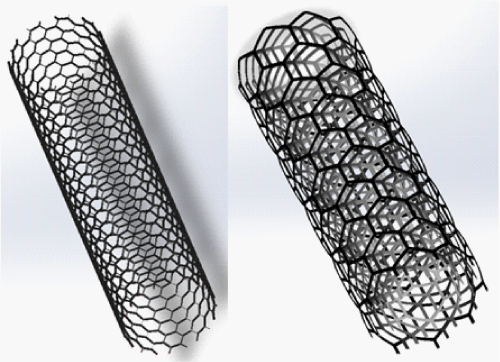Carbon-graphene nanotubes at the bottom of the catalyst (tip growth) based on the doctorate of nano-microelectronics (PhD in education and research)
Researcher and author: Dr. ( Afshin Rashid)
Note: If the catalyst interacts with the substrate is weak, the metal has an acute contact angle with the substrate (nanotube at the bottom of the catalyst) (tip growth) and if the catalyst interacts with the substrate is strong, the metal has an open contact angle, the nanotube above the growth catalyst. the slow (growth base) in the first case it is possible to produce nanotubes with one end open.
The physical shape of the deposited carbon of single-walled, multi-walled, amorphous, and graphite-layered carbon nanotubes covering catalytic nanoparticles depends on many factors, such as catalytic particle size and deposition rate. When the deposition rate is equal to or less than the rate of carbon penetration, a graphite layer forms around the catalytic nanoparticles. When the deposition rate is higher than the carbon penetration rate, carbon nanotubes are formed. The size of catalytic nanoparticles plays an important role in the growth of nanotubes. In general, small catalytic nanoparticles (less than 01 nm) are active for nucleation and growth of carbon nanotubes. If the particle size is one nanometer, a single-walled nanotube is formed. Catalytic nanoparticles with a size of 01 to 51 nm lead to the growth of multi-walled nanotubes. Also catalytic nanoparticles larger than 51 nm with amorphous sheets Graffiti are covered.
Graphene has a wide range of applications in the field of electronics due to some unique physical properties. Among these properties, the mobility of charged particles within graphene, or mobility, which is denoted by the letter μ, is very important. The value (mobility) for graphene sV / cm2 is 100000. Also, the saturation speed for it is reported to be about 5 × 107 s / m. The combination of these properties makes graphene a powerful conductor for electronic applications, including those used in transistors.
Conclusion :
If the catalyst interacts with the substrate is weak, the metal with the substrate has an acute contact angle (nanotube at the bottom of the catalyst) (tip growth) and if the catalyst interacts with the substrate is strong, the metal with the substrate has an open contact angle, the nanotube grows above the catalyst . (growth base) In the first case, it is possible to produce nanotubes with an open head.
Researcher and author: Dr. ( Afshin Rashid)
PhD in Nano-Microelectronics




